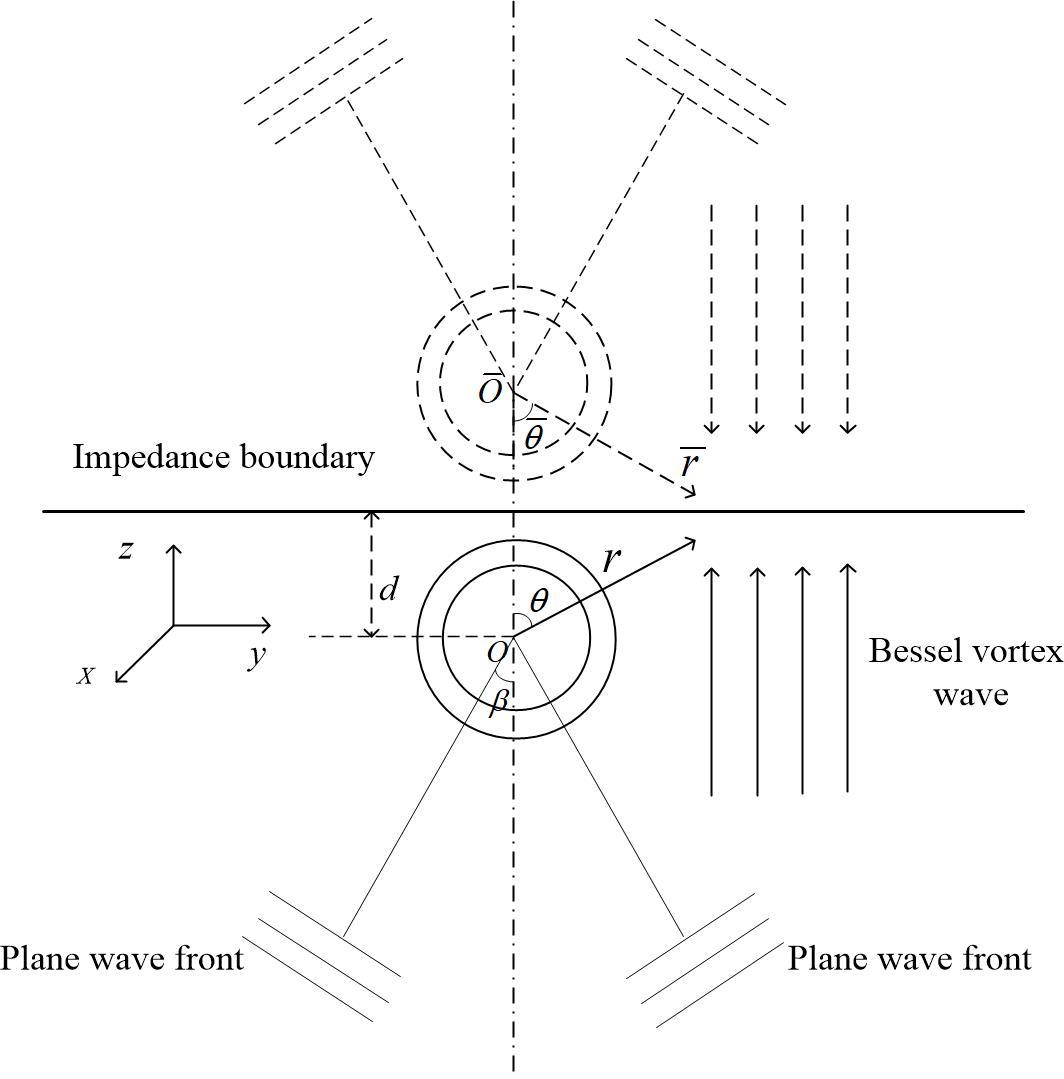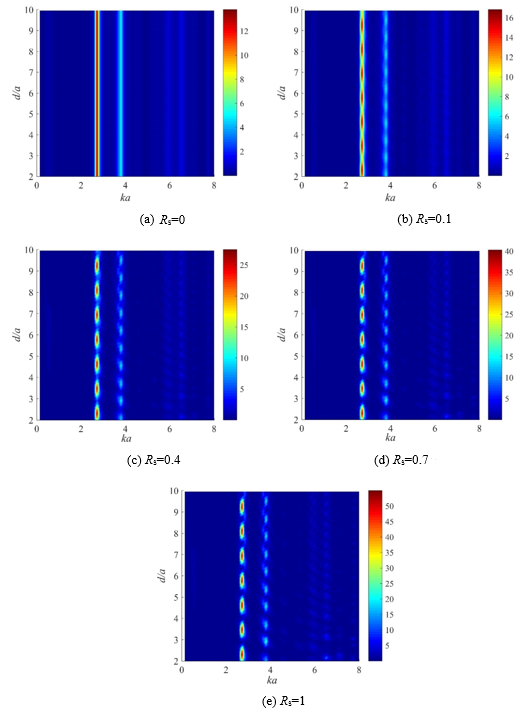Acoustic radiation torque (ART) is the transfer of angular momentum between sound waves and objects, which is conducive to controlling the rotation of micro-particles in acoustic fields. It has been widely used in acoustic tweezers, acoustic levitation, acoustic sensors and other fields. Traditional researches on acoustic radiation torque mostly focuses on the objects in free space. However, the actual acoustic manipulation is often performed near a certain boundary, such as manipulating contrast agents near the blood vessel wall. In this case, we must consider the effects of the interface on the acoustic radiation torque.
In response to this problem, researchers from the Institute of Acoustics of the Chinese Academy of Sciences (IACAS) successfully derived the expression of the acoustic radiation torque for a viscoelastic spherical shell near an impedance boundary in the vortex Bessel wave field using the partial wave series expansion method, the image theory and the additional theorem for spherical functions. They also analyzed the effects of different factors such as the shell-boundary distance, the reflecting coefficient of the boundary, the relative thickness of the spherical shell and the half-cone angle of the Bessel wave in detail.

Figure. 1 A Bessel vortex wave is incident upon a viscoelastic spherical shell near impedance boundary (Image by IACAS)
The computational results show that with the increase of reflecting coefficient, the acoustic radiation torque peaks increase in their amplitudes but not their positions. In fact, these peaks correspond to the eigenmodes of different orders of the spherical shell itself. In addition, a quasi-standing wave field is established between the spherical shell and the boundary due to the introduction of boundary. Therefore, the acoustic radiation torque changes periodically along with the shell-boundary distance, the period of which is related to the wavelength.

Figure. 2 The 2D plots of the axial acoustic radiation torque function on a viscoelastic PE shell versus ka and d/a for a first-order Bessel wave (Image by IACAS)
The variation of the relative thickness of the spherical shell would change the eigenmodes of the spherical shell and thus the acoustic radiation torque. The results show that as the spherical shell continues to become thinner (increasing the ratio of inner and outer diameter), the acoustic radiation torque peaks would increase significantly and the positions of the peak would shift. However, the decrease of acoustic radiation torque peaks is observed when the spherical shell is very thin (the ratio of inner and outer diameter is 0.99). Hence, the thickness of the spherical shell needs to be well designed to obtain the required acoustic radiation torque in real applications. In addition, the half-cone angle range should also be selected carefully. When the half-cone angle is zero, the sound beam would degenerate into a plane wave and cannot exert any radiation torque.

Figure. 3 The 2D plots of the axial acoustic radiation torque function on a viscoelastic PE shell versus ka and d/a for a first-order Bessel wave (Image by IACAS)
The research, published online in the international acoustic journal Journal of Sound and Vibration, was partly supported by the National Natural Science Foundation of China (Nos. 11604361, 11904384) and Youth Innovation Promotion Association, Chinese Academy of Sciences (No. 2019024).
Reference:
ZANG Yuchen, LIN Weijun, ZHENG Yinfei, SU Chang, WU Pengfei, CHANG Qin, Acoustic radiation torque of a Bessel vortex wave on a viscoelastic spherical shell nearby an impedance boundary. Journal of Sound and Vibration. 2021. DOI: 10.1016/j.jsv.2021.116261
Contact:
ZHOU Wenjia
Institute of Acoustics, Chinese Academy of Sciences, 100190 Beijing, China
E-mail: media@mail.ioa.ac.cn


